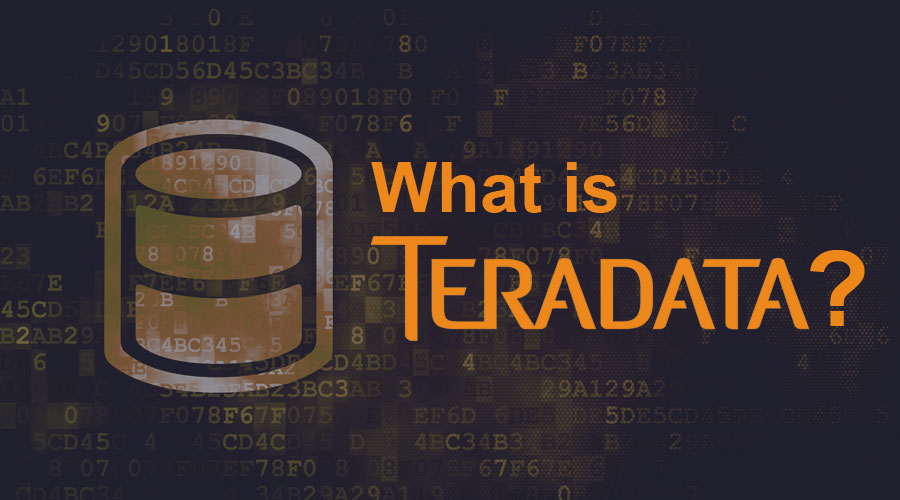Definition: Teradata
Companies widely use Teradata as a relational database management system (RDBMS) due to its special capabilities in providing consistent data and transactions, extensive security features, outstanding parallelism, excellent performance, strong and robust structure, high scalability convenience, and support for SQL querying. The significant components are Storage Architecture, AMPs or Access Module Processors, Parsing Engine, and a corresponding Message Parsing layer.
Features
- Unlimited Parallelism: It is based on MPP architecture (Massively Parallel Processing) which divides the workload evenly across the entire system. It splits the task among its processes and runs them parallelly, reducing the pressure, and the task is completed quickly.
- Connectivity: Teradata can connect to a mainframe or network-attached systems. It supports SQL to interact with data stored in the tables. Also, It provides its extension.
- Mature Optimizer: Teradata optimizer has matured and worked parallelly since the start.
- Linear Scalability: Teradata systems are highly scalable. They are scalable up to 2048 nodes. One can easily triple the system’s capacity by tripling the number of AMPs.
- Robust Utilities: It supports vital utilities to import/export data Eg: Fast Load, Multi-load, etc.
- Shared Nothing Architecture: Teradata nodes and AMPs work independently without sharing. They work independently.
- Useful for any type of user: It can be customized to any user, like business users or application users. The SQL of Teradata can be customized for business needs and provides excellent features for business requirements.
Components
The significant components are Parsing Engine, ByNet, and Access Module, Processors. Below are the key components of the system:
Node
Every individual server in Teradata is called a node. Every node has its operating system, memory, CPU, disk space, and copy of Teradata RDBMS. A cabinet of a Teradata would contain the number of nodes.
Parsing Engine
The Parsing Engine receives client queries and generates a well-defined execution plan. The parsing engine’s responsibilities are:
- Receiving SQL Query from the client
- Parse the received query into the system and check for any syntactical errors
- Check if the user has the required privileges for objects used in the query.
- Prepare a neat execution plan, get the query, and pass the SQL query to BYNET.
- To receive the results from AMP and send them to the client
Message Parsing layer
This is BYNET and is the networking layer of the Teradata system. It is used for communication between nodes, between PE and AMP.
Access Module Processor
AMPs are also called virtual processors. These are the ones that store the data and retrieve the data.
Storage Architecture
Let’s look at how storage processing takes place in the system.
The parsing engine sends the records to BYNET when the client inputs a query to insert them. BYNET retrieves the records now and sends the rows to target AMPs. AMPs store the records on the disk.
The process of Retrieval
When a client runs the queries to get the records, first, the parsing engine sends a request to BYNET. BYNET sends the request to respective AMPs. AMPs then search their disks in parallel, identify the required record, and send it to BYNET. BYNET would then send the records to the parsing engine, which again would send them to the client and complete it.
When to opt
When we need a highly scalable, high-performance-oriented, and massively parallel data warehousing system, we chose Teradata.
If the requirement is solely data exploration, loading data from multiple scenarios, and similar tasks, there is no need to opt for Teradata.
Teradata Security
It offers a high level of security; it provides system-level and user-level password protection, row and column-level security, and user authentication.
What do you need to know if you want to use Teradata and make it a career option?
It is RDBMS which is DBMS software that helps to interact with data tables using SQL. Knowledge of DB, like SQL querying or any DB languages, can help you switch to Teradata usage. However, one must be highly creative to become a Teradata professional and logically capable of writing scalable and optimum queries.
However, the career options for a Teradata engineer are quite few, as most companies implement Teradata for only large-scale applications.
Recommended Articles
This has been a guide to What is Teradata. Here we discussed the Basic Concept, Features, and Components of Teradata. You can also go through our other suggested articles to learn more –



